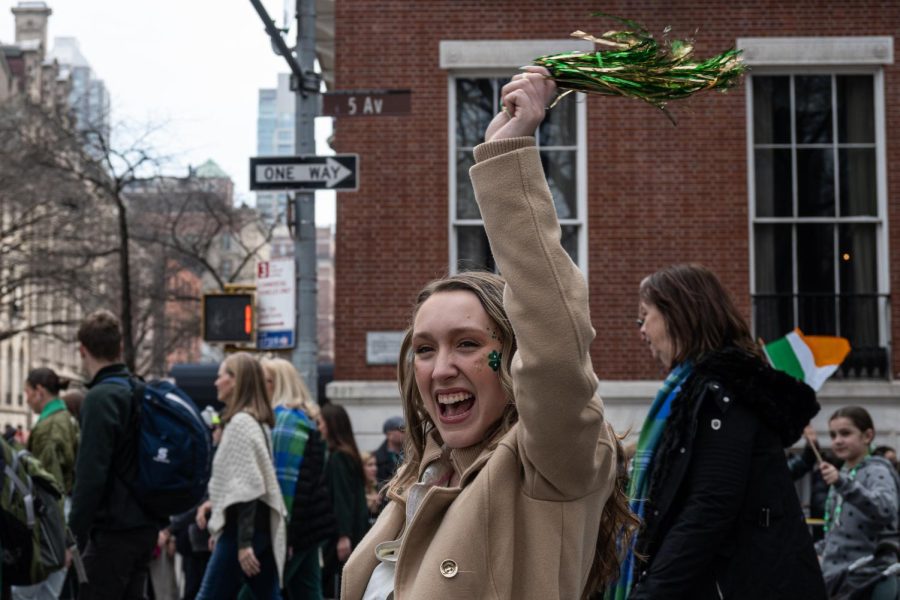St. Patrick’s Day Parade: A Photo Essay
Returning to New York City for its 262nd year, the parade brought an audience clad in green and Irish pride as they watched a sea of bagpipes, dances and marching bands
March 24, 2023
St. Patrick’s Day — celebrated annually on March 17 — comes with many traditions: wearing green, pinching anyone who isn’t wearing green, drowning the shamrock (dunking a four-leaf clover into the last cup of whiskey of the night and then throwing said clover over the left shoulder — it’s meant to bring good luck!) and kissing anyone who is Irish. For New York City, however, the main tradition is the St. Patrick’s Day Parade.
Since 1762, Fifth Avenue between 44th (beginning from the steps of St. Patrick’s Cathedral) and 79th Street has been filled with performers, bands and even our state officials as people come to celebrate the joyful occasion. It is known as the oldest and largest St. Patrick’s parade in the world. Since then, the parade has been run wholly by volunteers — including Fordham University — with many coming from generations of parade organizers.
The parade was first initiated by various homesick Irish soldiers that were stationed in the New York colonies. Considering that green clothing was banned in Ireland at the time, the soldiers dedicated this time to immerse in Irish culture fully, wearing that forbidden green color and speaking Irish among themselves as they sang and danced to Irish music and the sound of bagpipes. Originally, the parade was only organized by the military during the War of 1812, however, Irish fraternal and beneficial societies took it upon themselves to host and sponsor the well-known event.
Nowadays, the parade features police, firefighters, schools, colleges and church groups uniting to celebrate the luck of the Irish.
















